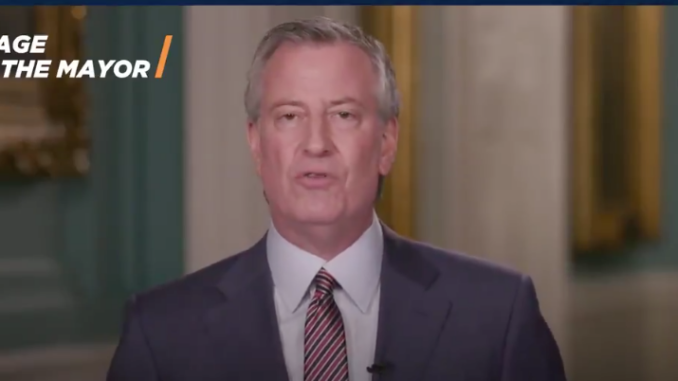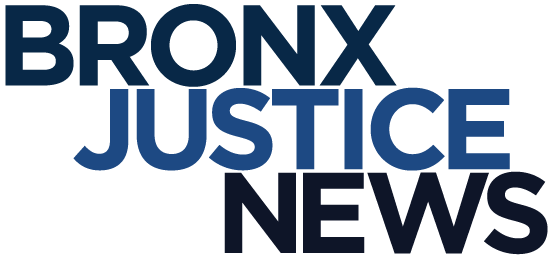
By Kevin Deutsch and Sasha Gonzales
[email protected] , [email protected]
Mayor Bill de Blasio on Sunday demanded the city receive more COVID-19 testing kits from the feds in order to help virus-ravaged communities of color, after Bronx Justice News revealed acute testing shortages and rationing across the borough.
With low-income Bronx residents growing increasingly desperate for diagnosis and treatment in the virus’ epicenter, the mayor said he would phone the White House Sunday to request enough kits to serve 110,000 New Yorkers in high-need, high-poverty neighborhoods.
De Blasio, who has faced criticism from residents for a lack of testing in the Bronx, said he hoped the “community testing” program could begin by week’s end. But, he stressed, that timeline is contingent upon the feds shipping a large amount of kits to New York City, and doing so quickly.
“I will have that conversation today with the White House,” de Blasio said in a morning press briefing.
“The federal government really needs to step up,” said the mayor, who has spoken with President Donald Trump several times during the crisis. “We have not gotten the help we need on testing. Here’s a chance to get it right.”
The community testing sites are slated to operate in Morrisania, East New York, Harlem, Jamaica, and Clifton, de Blasio said. But no addresses have been announced.
The planned sites will be operated by the city, with the Morrisania site operated by NYC Health + Hospitals/Gotham Health and “available by appointment only, with a priority for those who are over the age of 65 with symptoms and preconditions that put them at risk for serious illness,” the mayor’s deputy press secretary, Avery Cohen, said in an email.
Till now, the government has recommended sick New Yorkers call the state to request testing. But several South Bronx and Morrisania residents interviewed by Bronx Justice News last week said they had tried, and failed, to schedule coronavirus tests through the state-run COVID-19 hotline.
Some were told they weren’t sick enough, while others failed to complete the screening process the state requires all callers submit to before speaking with a health professional.
Still others, fearing state officials would share their personal information with the federal government, declined to complete the screening process because they lack documentation of citizenship.
The bureaucratic hoops are proving especially challenging for families without reliable Internet access or unlimited cell phone plans, as well as the elderly, disabled, and home-bound, these residents said.
As for the city, it is currently only testing patients in need of hospitalization. That policy was the result of the federal government’s initial failure to send large numbers of COVID-19 test kits to the city, the mayor said.
“We never got that help,” said de Blasio, who has pleaded with the feds for weeks to send more supplies.
“We need to get these test kits this week” from the feds, he said.
In addition to a handful of state-run Bronx testing sites, which keep daily caps on how many patients can be tested, COVID-19 tests have sometimes been available through urgent care clinics, private hospitals, and private practitioners, but they remain difficult to access for the general public.
So far, the city’s test supplies have gone mostly to first responders like health care workers, the mayor said.
Amid the test shortage, the city’s poorest residents have been left largely without access. Currently, there is no COVID-19 testing facility in the South Bronx—America’s most impoverished congressional district per capita, and a community with some of the highest coronavirus death rates in the city
The dearth of key supplies like tests comes as New Yorkers are dying in their residences at about ten times the normal rate, city data shows. Causes of death have not been established for many, meaning they are not reflected in the city’s daily COVID-19 death totals.
Testing is critical to isolating, treating, and limiting the spread of coronavirus, which, in addition to infecting 21,523 Bronxites and killing 1,308 of them as of Saturday, is taking a devastating economic toll on the city’s poorest borough, local officials, business owners, and activists said.
Coronavirus “hurts people everywhere, but we see disparity where those who have been hit hardest are low-income communities, immigrant communities, folks who were vulnerable already,” the mayor said.
“We cannot accept this inequality—we have to attack it with every tool we have,” he said.
Behind the Bronx’s stunning death toll lay a host of systemic public health issues: The borough has the city’s highest rates of poverty, asthma, diabetes, and infant mortality, and includes some of the poorest, most food insecure neighborhoods in America.
The Bronx is also home to the city’s largest minority population, and has historically received fewer government resources than its whiter, wealthier neighbors.
Latino New Yorkers make up 34% of COVID-19 deaths in New York City and 29% of the population, city data shows. African Americans, meanwhile, make up 28% of the deaths and 22% of the population. Nationwide, statistics complied by the Centers for Disease Control and Prevention also show people of color dying from coronavirus at disproportionate rates.
“This will be targeting testing in communities with the greatest needs,” de Blasio said of the planned city program.
This is a developing story. Check back for updates.
